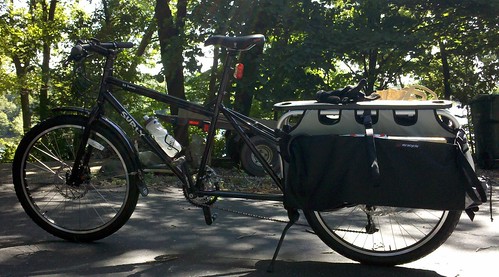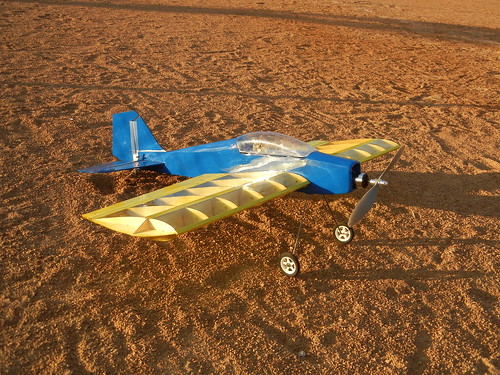Now that I've gotten into electric RC airplanes, I have plenty of
decent LIPO batteries and their assorted chargers around. This greatly
simplifies making a LED bike light- now I just need the light itself,
and the associated electronics to drive the light. I'd like to break
this project into two components:
1) Build a device to
allow me to drive my existing old-school 6V Niterider digital head trip
lights off of 7.4V and 11.1V LIPO batteries. This will include a voltage
regulator and a low voltage cutoff to prevent the LIPOs from being
over-discharged and damaging the batteries.
2) Source appropriate LED lighting system to drive with the LIPOs.
So, my old Niterider is a 6V model, with maximum 15 watt power usage.
(from my memory of the advertisements, not actual measurements)
Using P=V^2/R, and V=IR:
R = .42 ohms
I = 2.4A
A
possible method to both regulate the voltage and protect the battery
packs would be to use a UBEC. Hobbyking has one potential model:
http://www.hobbyking.com/hobbycity/store/uh_viewItem.asp?idproduct=2160.
This product can output either 5.0v or 6.2v depending upon jumper
setting, plus it is capable of 4A current draw and has a low voltage
warning buzzer. And it only costs $11.25.
This seems like a good solution to me. Cheap, easy and simple!
As part of
an order from Hobbyking for some RC airplane parts, I added a UBEC to
try with my existing bike lights. I ended up ordering a different unit
than I specified in the previous post- I went with this one instead:
TR-UBEC15. It was a couple more dollars, but it has a much higher current capacity as well as being in stock.
Converting the UBEC to power the Niterider Digital head trip was easy- but ultimately unsuccessful.
Step 1: Cut off stock connectors off of UBEC and solder on EC3 (to connect with my LIPO batteries)
Step 2: Cut open old, worn out Niterider NIMH battery pack to recover the cord:
Step 3: Solder the NiteRider power cable to the UBEC output.
The NiteRider plug is a "N" style plug, available at your neighborhood RadioShack. It's also center positive. In my cable, the white wire was the center positive, and the black was the outside ground. The red wire was unused. The colors may vary, so be sure to use a voltmeter to double check which lead is correct.
When everything was soldered and insulated with heat shrink- I did a quick short check then fired it up. It worked just fine- unfortunately the UBEC didn't deliver 6V- it was closer to 5.8V. The NiteRider Digital head unit didn't like that, and registered it as a flat battery and went into the low power "limp home" mode.
Bummer. Next time I place a Hobbyking order I'll try another UBEC, and hopefully I can find one with a specified higher voltage output.
This might be a good option- 7.2V output- will overdrive the bulb slightly but should avoid triggering the head unit low voltage error.
FYI, I finally ordered and soldered together the new UBEC (which works).
See the post HERE.
In the mean time, I made a simple charge adapter to allow my RC battery charger to charge my old NiHM NiteRider batteries. It just a Type N power socket (from RadioShack) connected to an EC3 connector.
It works great. The big advantage is that the charger is programmable- so I can have it run multiple discharge-charge cycles automatically to cycle the battery pack. This is particularly important since the packs have been sitting around half-discharged for the last year or so.










































